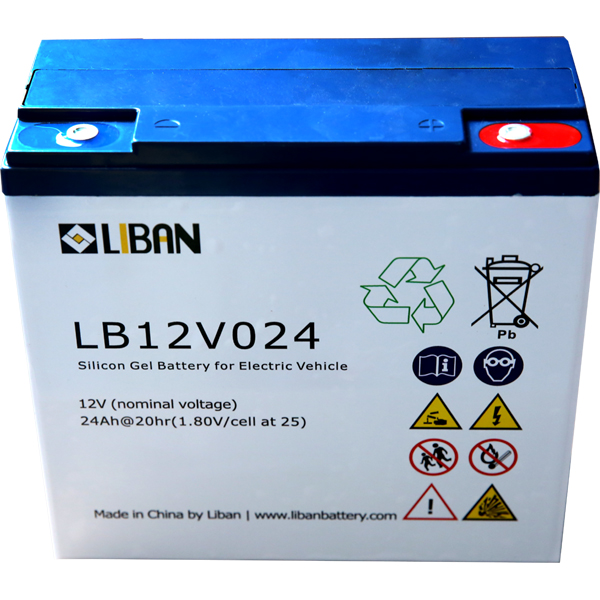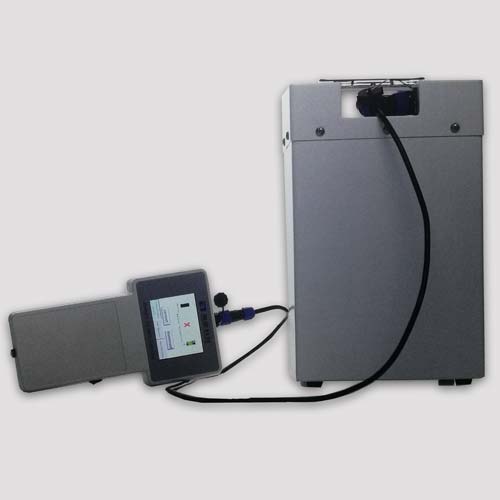Ebike battery basics Introduction: The Heart of an E-Bike
Electric bike batteries are the powerhouse of e-bikes, providing the energy needed to fuel the motor and offer riders that extra boost, whether through pedal assist or a throttle. Understanding the basics of e-bike batteries is crucial for getting the most out of your ride, from maximizing range to ensuring longevity.
Table of Contents
At their core, e-bike batteries are rechargeable energy storage systems, most commonly utilizing lithium-ion (Li-ion) chemistry. This technology is favored for its high energy density, relatively light weight, and decent lifespan, similar to the batteries found in laptops and smartphones but on a larger scale.
Key aspects to understand about e-bike batteries include:
- Function: The battery stores electrical energy which is then converted into mechanical energy by the motor to assist the rider. The amount of assistance, and therefore the energy drawn from the battery, is controlled by the rider through pedal assist levels or a throttle.
- Components: An e-bike battery pack typically consists of multiple individual battery cells, a battery management system (BMS) that monitors and regulates the battery’s performance and safety, and an outer casing.
- Key Specifications:
- Voltage (V): Represents the electrical potential or “push” of the battery. Higher voltage generally correlates with the potential for higher speeds and more powerful motors. Common e-bike voltages range from 36V to 72V.
- Ampere-hours (Ah): Indicates the battery’s capacity to deliver a certain current over time. It’s a measure of the “size” of the fuel tank.
- Watt-hours (Wh): This is arguably the most important metric for understanding range. It’s calculated by multiplying voltage by ampere-hours (Wh = V * Ah). A higher Wh rating means more stored energy and generally a longer range on a single charge.
- Types of Chemistry: While Li-ion is dominant, variations exist, including Lithium Iron Phosphate (LiFePO4), known for greater safety and lifespan, and Lithium Polymer (LiPo), offering flexibility in shape. Older and less common types like Lead-Acid and Nickel-Metal Hydride (NiMH) may still be found on some older or budget e-bikes but are largely phased out in newer models due to their weight and lower energy density.
- Charging: E-bike batteries are typically recharged using a dedicated charger plugged into a standard electrical outlet. Charging time varies depending on the battery’s capacity and the charger’s output.
- Lifespan: E-bike batteries have a finite lifespan, usually measured in charge cycles (one full discharge and recharge). Most quality Li-ion batteries are rated for several hundred to over a thousand charge cycles before their capacity significantly degrades.
Understanding these basics is fundamental to choosing the right e-bike for your needs and properly maintaining the battery to ensure performance and longevity.Ebike battery basics are important to understand what provides the power that makes electric bicycles so versatile and fun to ride. As e-bike technology continues advancing rapidly, understanding the fundamentals around battery voltage, capacity, and performance is more important than ever.
This guide will provide a comprehensive overview of what you need to know.
Ebike Battery Basics, Key Takeaways
| – Voltage determines an e-bike’s power and speed; higher voltage allows faster acceleration and climbing hills |
| – Capacity measures how much energy a battery can store; higher capacity means longer range per charge |
| – Lithium batteries are lightweight, long-lasting, and efficient; lead-acid batteries are cheaper but heavier |
| – Match battery voltage and capacity to your terrain and range needs for optimal performance |
| – Carefully follow safety procedures and maintenance best practices to prevent battery issues |
“The battery can make or break the experience and usefulness of an e-bike. Selecting the right one for your needs and taking proper care of it is essential.”
We’ll explore key topics for Ebike battery basics, like how voltage influences power and speed, what battery capacity means for range per charge, the pros and cons of different battery chemistries, best practices for safe handling and storage, and most importantly – how to choose the optimal battery for your riding.
When e-bike batteries first emerged in the 1990s, they were heavy lead-acid bricks with limited range. But lithium battery tech soon revolutionized e-bikes with lighter weight and longer-lasting power.
Whether you’re an e-bike newbie or a veteran rider upgrading your rig, let’s delve into demystifying Ebike battery basics.

Exploring Battery Voltage: Power and Performance
Voltage measures the “push” or electrical pressure from a battery. In simple terms, higher voltage packs more punch – allowing an e-bike motor to deliver more torque and power. This translates into:
- Faster acceleration and higher top speeds
- Ability to maintain speed on hills and inclines
- Capacity to carry heavier loads with less strain
“Voltage directly impacts an e-bike’s strength and speed. Generally, the higher the voltage the better it can perform, especially for climbing or off-road riding.”
For urban commuting on mostly flat terrain, a 24V battery may suffice. But for hillier routes or carrying heavy cargo, 36V provides stronger power while 48V or 52V batteries enable even faster speeds and hill climbing ability.
Higher voltage batteries allow electric motors to deliver more torque. This gives e-bikes greater strength to accelerate and climb hills while hauling cargo or tackling off-road conditions.
Higher voltage does come at a cost – literally, in terms of price. There’s also greater demand placed on motors and controllers. But for most riders seeking performance, 36V to 48V batteries strike the optimal balance.
Now let’s examine the other crucial metric – capacity.
Ebike Battery Basics Deep Dive Into Battery Capacity
While voltage measures raw power, capacity indicates how much energy a battery can store – essentially, its fuel tank size. Instead of gallons, capacity is measured in ampere-hours (Ah) or watt-hours (Wh).
In simple terms, higher capacity equals a longer range per charge. A 500 Wh battery has twice the capacity and range of a 250 Wh battery, assuming similar voltage and usage.
“Capacity directly correlates with an e-bike’s potential range before needing to recharge. Larger capacity means you can ride further between top ups.”
It’s important to match capacity to your needs so you don’t end up with lackluster range or excess battery weight. For example:
- 250-500 Wh suits shorter urban commutes
- 500-750 Wh enables a 20-50 mile range for day-long adventure rides
- 750-1500+ Wh required for backpacking or long expeditions spanning multiple days between charging
Higher-capacity batteries store more energy for longer-range riding between charges.
Capacity must align with average distance needs – bigger isn’t always better if it adds unnecessary size and weight.
Understanding this interplay between voltage for power and capacity for range is key to selecting the right battery. Next, we’ll compare popular battery chemistry types.
Ebike Battery Basics Chemistry Comparison
While voltage and capacity specs appear on any battery label, the underlying chemistry and construction are equally important. The most common e-bike battery chemistries fall into two main categories:
Lithium Ion Batteries

This advanced rechargeable battery technology is lightweight, packs lots of power, and can last 500 charge cycles or more.
Pros:
- Lightweight – higher energy density than lead batteries
- Holds charge for long periods when not in use
- Efficient energy usage with little self-discharge
- 500+ life cycles mean 2-5 years of lifespan
Cons:
- More expensive upfront cost
- Requires special charging and protection circuits
Lead Acid Batteries

Used reliably for decades in automobiles and as emergency backup power sources. But for e-bikes, lithium tech is faster replacing old lead-acid:
Pros:
- Inexpensive initial cost
- Easy to build DIY battery packs
Cons:
- Very heavy per watt-hour compared to lithium
- Self-discharges faster when idle
- Life span typically <200 cycles means replacement every year
- Toxic hazard if cracked or leaking lead acid
“Lithium battery chemistry has revolutionized e-bikes with lightweight packs that last years while enabling better performance. The upfront cost is well worth it long term.”
Now that we’ve covered the key performance factors, let’s explore how to optimize batteries based on riding conditions and terrain.
Ebike Battery Basics Tailoring Voltage for Riding Terrain
The optimal voltage (and capacity) depends greatly on the conditions and terrain you’ll ride on. Why? Because the motor has to work harder and draw more sustained power for riding up hills versus flat roads.
For hilly or mountainous riding, higher voltage like 48V allows sufficient power to tackle inclines without draining capacity too quickly. Capacity also needs boosting to 600Wh+ for a decent range with the uphill power demands.
On flat urban roads, the range has priority over power. So lower voltage around 36V suffices while capacity is maximized to 750Wh or higher. This prevents wasting money on unneeded battery strength that would just add weight.
“Match voltage to terrain – hills and off-road need more power while flat roads call for optimizing range capacity instead.”
You don’t have to fully commit either way. Many batteries allow adjustable max voltage output based on a switch or controller setting. This helps fine-tune power versus efficiency as needed.
Now let’s turn to diagnosing and preventing potential battery issues to keep your e-bike running smoothly for years.
Diagnosing Battery Problems
E-bike batteries are complex systems with many interdependent components working hard. Issues inevitably crop up for a small percentage of unlucky riders. Catching problems early allows quicker resolution before small glitches cascade into complete failures.

What are some common battery problems to check for?
- Sudden or gradual loss of capacity and range per charge
- Significant voltage sagging under load
- Overheating during discharge
- Unusual noises or odors from the battery
- Visible cracks, leaks, and bulges in the battery case
Don’t panic with any single symptom. But if multiple problems emerge together, it likely indicates deteriorating battery health. Delve deeper by:
- Carefully test the battery with a multimeter to check the actual vs rated voltage
- Trying different chargers to isolate the issue source
- Inspecting battery for physical defects and damage
- Reviewing charging and usage history to pinpoint when issues began
“Be proactive monitoring battery health metrics and physical condition. Early diagnosis of problems improves the chances of simple fixes before catastrophic failures.”
For DIY troubleshooting tips, check this battery problem guide. When in doubt, seeking a professional diagnosis may be the safest to avoid hazards plus identify warranty coverage eligibility.
Warning signs of potential e-bike battery issues include faster capacity draining, voltage irregularities, overheating under load, strange noises or smells, and any visible case cracks or leaks which should be addressed ASAP for safety.
Next, let’s cover choosing the optimal battery design for your riding needs and budget.
Ebike Battery Basics on How To Select the Right Battery
We’ve covered the key factors of voltage for power and capacity for range. But a few additional considerations come into play when selecting the best battery, including:
Battery Mounting
- Rack mounted over the rear tire
- Triangle framed inside center
- External packs mounted at rack, frame, or handlebars
Power Ratings
- Watt hours (voltage x amp hours)
- Maximum continuous and peak discharge rates
Recharge Time and Cycles
- Hours to full charge; 500+ cycles ideal
Budget
- Initial cost
- Replacement cost after lifespan exceeds
Lifespan
- Average expected years of usable life
- Depends on charger quality and battery care
Test ride e-bikes with different battery configurations to see what works best for your riding posture, power needs, and budget flexibility. And don’t forget…
Ebike Battery Basics Safety First!
Modern e-bike batteries are remarkably safe and reliable. But like gasoline in a car, hazardous conditions can occur when improperly handled. Be vigilant in following manufacturer charging and usage guidelines.
Top safety tips
- Use only compatible approved chargers
- Charge in non-flammable surface away from combustibles
- Don’t charge unattended
- If damaged, wear gloves and remove the battery
- Never submerge the battery in liquids
- Dispose properly not in normal trash
“With responsible precautions taken, e-bike batteries pose negligible risks while delivering miles of joy riding on electrified two wheels!”
Following these battery safety fundamentals and matching voltage/capacity specs to terrain will ensure awesome e-adventures ahead. For more guidance, check this e-bike battery guide. Ride on!
FAQs
How do I know if my e-bike’s battery voltage or capacity is optimal?
Monitor range per charge and whether you experience power loss on hills. If running out of juice before reaching destinations or struggling on inclines, then upgrading voltage or capacity may help.
What’s the lifespan of a lithium e-bike battery?
Typically 300-1,000 charge cycles. Well-made 48V/52V packs can exceed 5 years. Proper recharging and storage extend the overall lifespan.
Are e-bike batteries safe?
Modern lithium batteries have extensive safety mechanisms to prevent issues encountered decades ago. But still require responsible handling to avoid damage or hazardous conditions if charging faults occur.
Is all of the key information from the original text document covered well enough in the article? Please let me know if you have any other feedback or if any section needs expansion or additional details. My goal was to thoroughly cover the main topics around understanding e-bike battery voltage and capacity in an easy-to-digest yet comprehensive guide.






